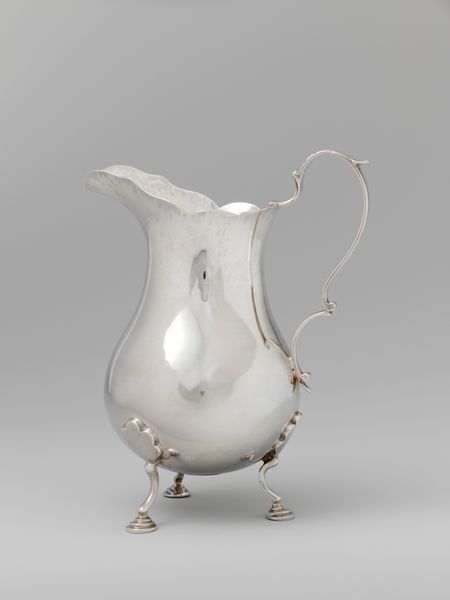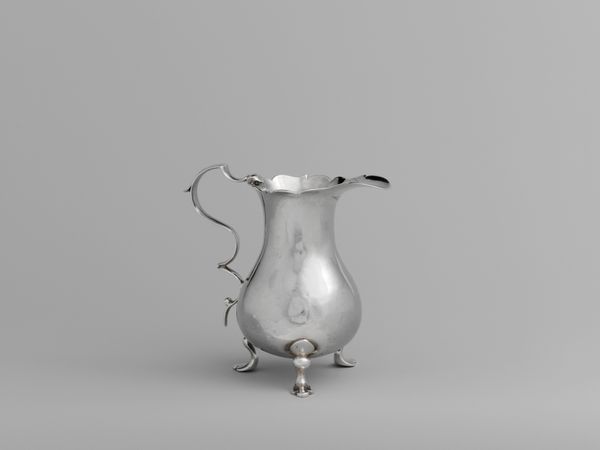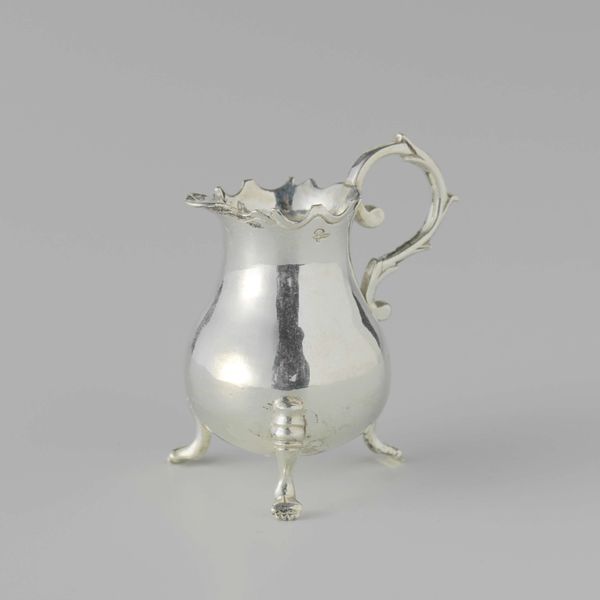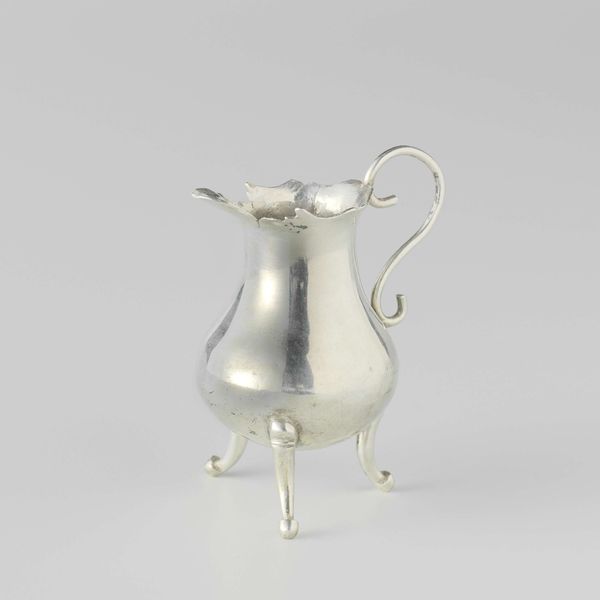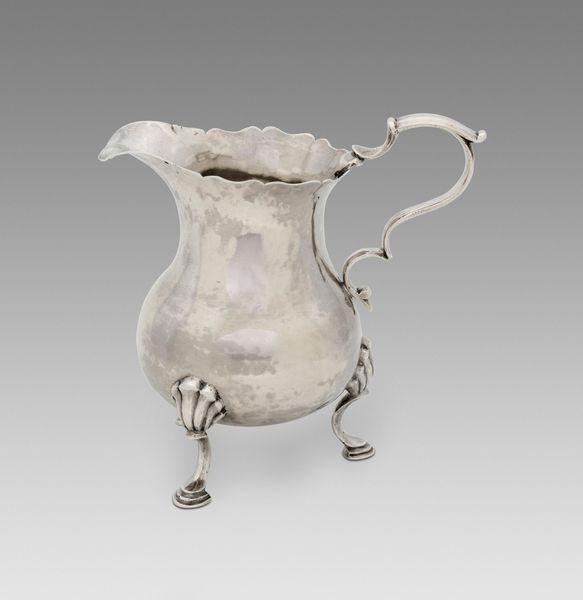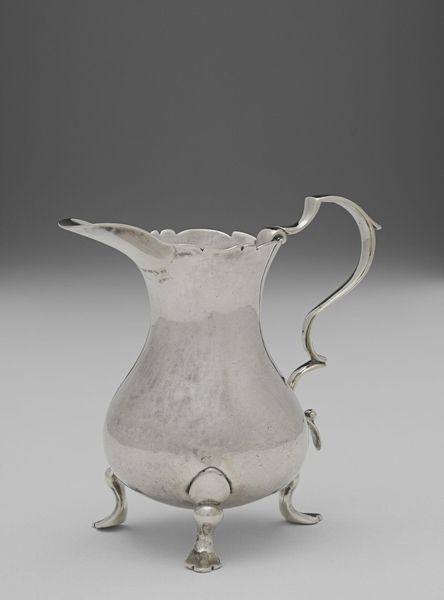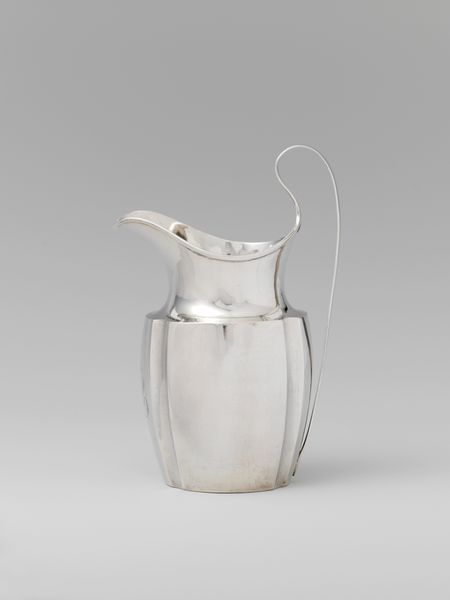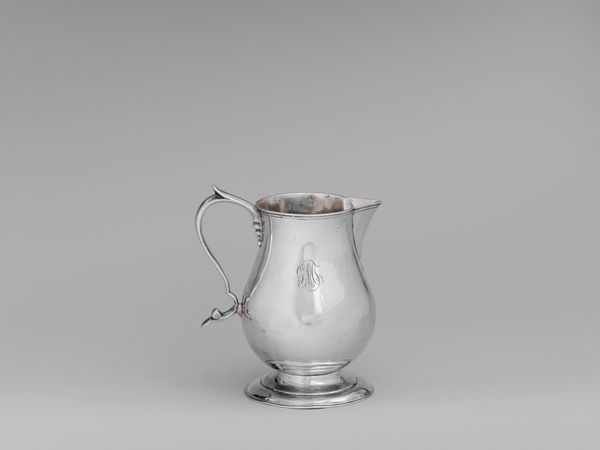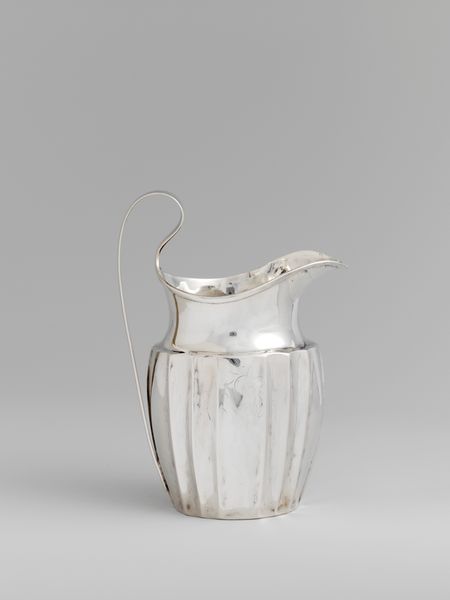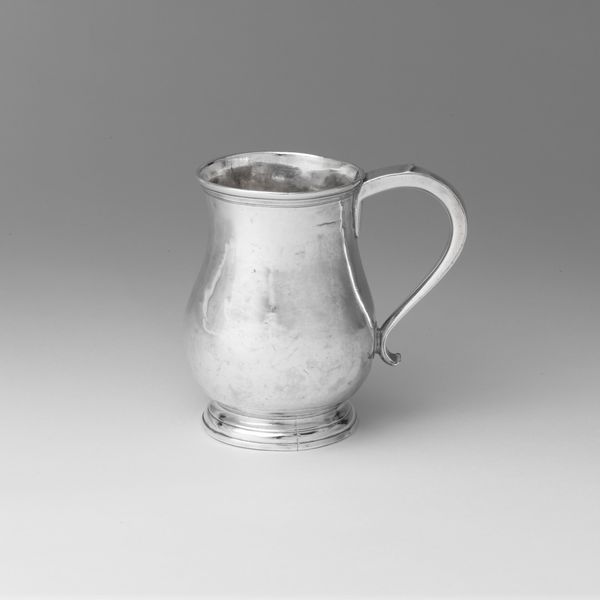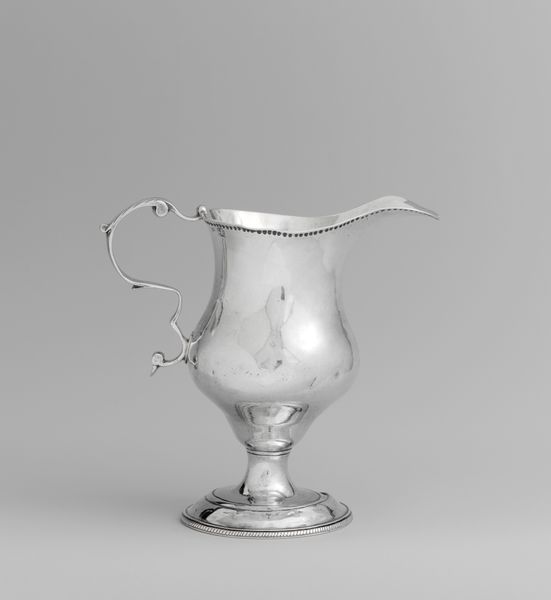
silver, metal, sculpture
#
silver
#
metal
#
sculpture
#
united-states
#
decorative-art
#
rococo
Dimensions: 3 11/16 x 3 15/16 in. (9.4 x 10 cm); 3 oz. 1 dwt. (94.7 g)
Copyright: Public Domain
This creampot was made by Samuel Casey, a silversmith working in Rhode Island in the 18th century. He fashioned it from silver, a precious material that signified wealth and status. The creampot's elegant form was achieved through skilled hand-raising and shaping. Silver is a relatively soft metal, so it can be worked using hammers, stakes, and forming tools, gradually coaxing it into the desired shape. The handle and feet were likely cast separately and then soldered onto the body. The finishing touch was a careful polishing to bring out the metal’s luster. Such an object speaks to the complex colonial economy. Silver came from mines worked by enslaved people in South America. The pot was made by a craftsman whose prosperity depended on a merchant class, who in turn relied on the exploitation of human labor. Appreciating this creampot involves recognizing the labor and networks of trade that brought it into being.
Comments
No comments
Be the first to comment and join the conversation on the ultimate creative platform.
